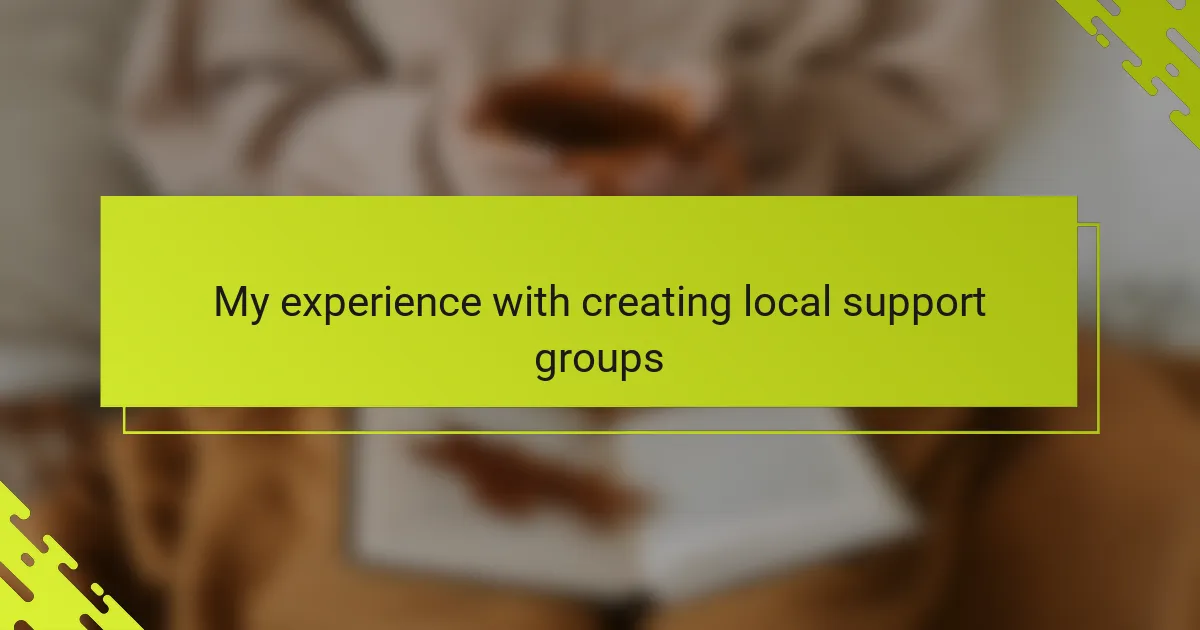Key takeaways
- Local support groups provide essential emotional support, fostering connection and empowerment among members.
- Creating a successful support group requires intentionality, clear guidelines, and consistent commitment to nurturing trust and safety.
- Engagement activities, such as creative workshops and community service, enhance bonding and provide deeper connections beyond traditional discussions.
- Patience and celebrating small wins are crucial for maintaining group momentum and encouraging participation.
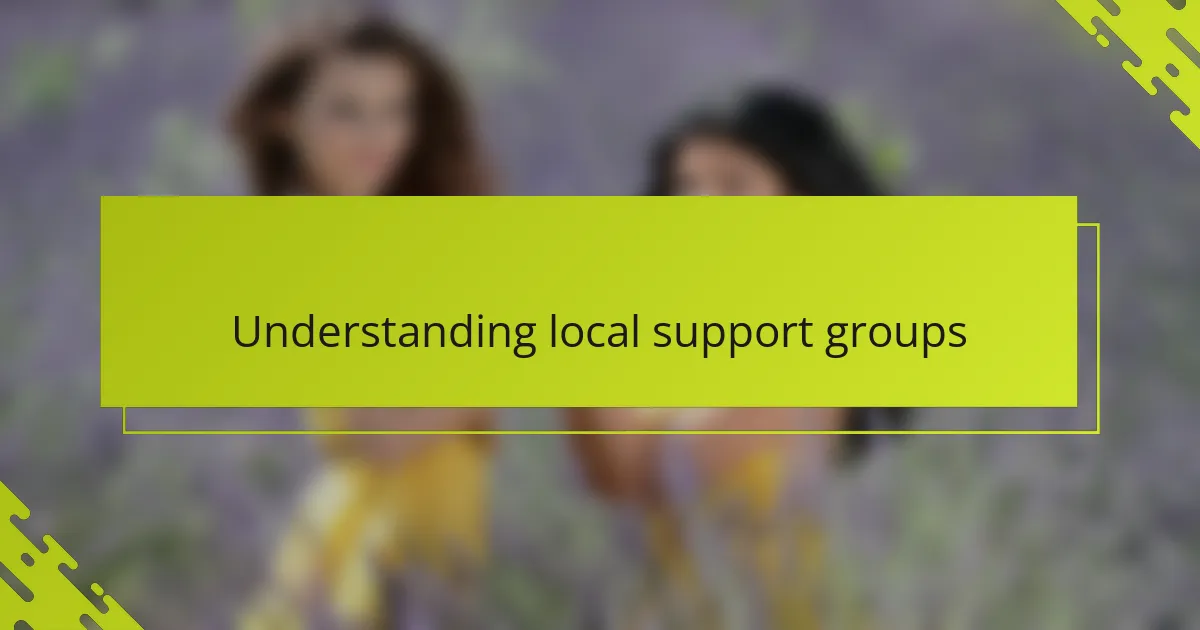
Understanding local support groups
Local support groups, to me, are more than just gatherings—they’re lifelines. When I first joined one, I realized how essential these spaces are for sharing struggles and victories that often go unnoticed elsewhere. Have you ever felt isolated in your experience? That’s exactly what these groups help dissolve.
What stands out about local support groups is their focus on creating a safe, judgment-free zone where queer women can express themselves openly. I remember the relief I felt when I heard others articulate feelings I had long kept hidden. It’s this sense of shared understanding that builds genuine connection.
But beyond emotional support, these groups often become hubs for practical advice and empowerment. I’ve seen firsthand how exchanging resources or strategies on navigating everyday challenges can transform individual confidence. Isn’t it powerful when community knowledge becomes a tool for personal growth?
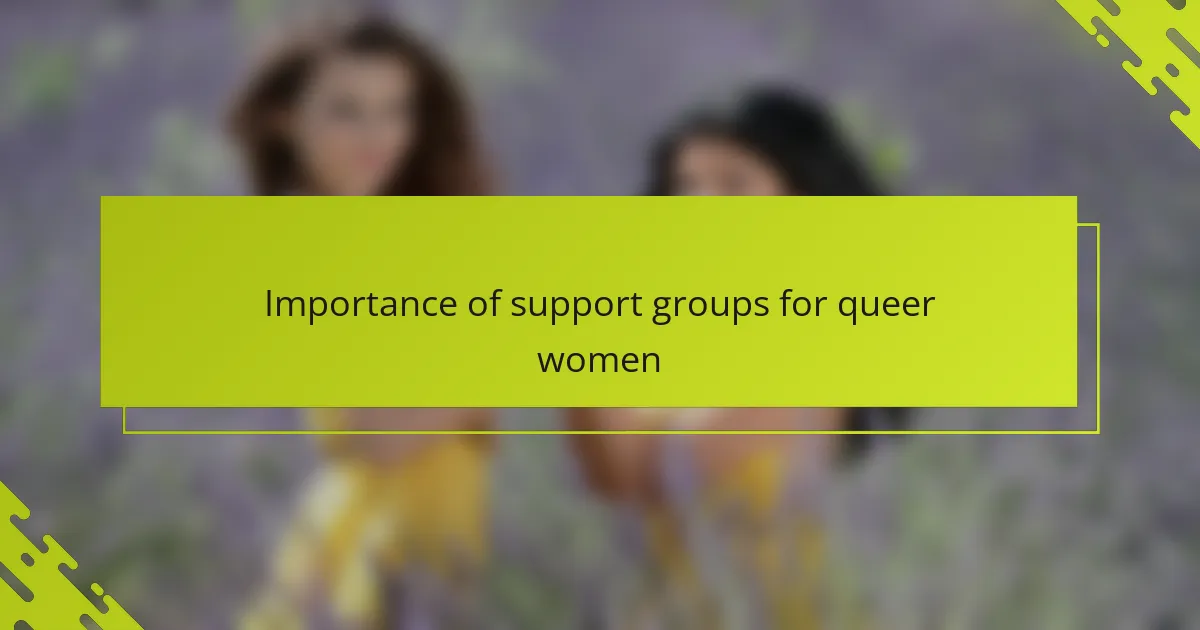
Importance of support groups for queer women
Support groups for queer women offer more than companionship; they become places where identities are affirmed and celebrated. I’ve noticed that when people feel seen and heard, it nurtures a kind of healing that’s hard to find elsewhere. Have you experienced that moment when just being in the company of understanding people eases an invisible weight?
What makes these groups indispensable is their role in combating isolation, which many queer women face daily. I recall times when meeting others who shared my story reminded me that I’m not alone — and that realization can be life-changing. Isn’t it incredible how solidarity can turn loneliness into strength?
Beyond emotional connection, support groups cultivate resilience by fostering empowerment. From my experience, learning how others navigate challenges inspires confidence and sparks new ideas for coping. How often do we underestimate the power of community wisdom until we witness its impact directly?
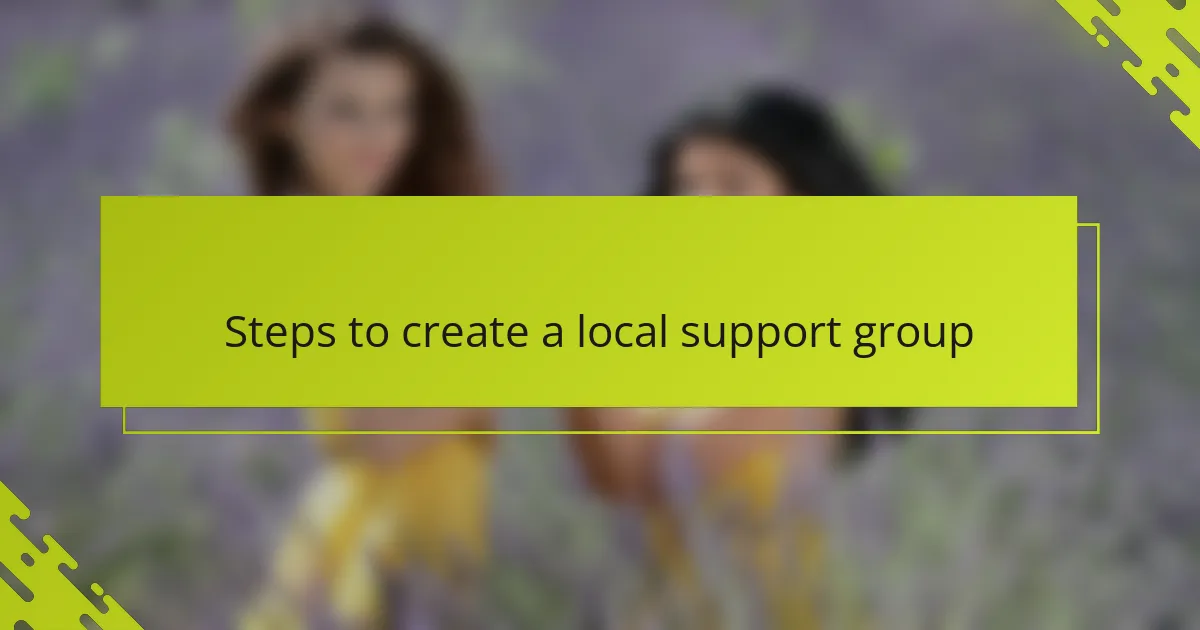
Steps to create a local support group
Starting a local support group begins with finding a clear purpose and inviting those who share similar experiences. When I first thought about creating a space for queer women, I asked myself, “What kind of environment do I want to build?” Defining this helped me reach out with intention, whether through social media, local flyers, or word of mouth.
Next, organizing the logistics felt daunting at first, but setting simple guidelines and choosing a comfortable meeting place made a huge difference. I remember the relief when we held our first gathering in a cozy café—it instantly felt welcoming. Have you found that the right space can ease tension and encourage openness?
Finally, nurturing trust takes patience and consistency. In my experience, showing up regularly and encouraging honest conversations turned strangers into a supportive community. I often wondered, “How do we keep this momentum going?” The answer came through sharing stories, celebrating progress, and being there even when topics got tough.
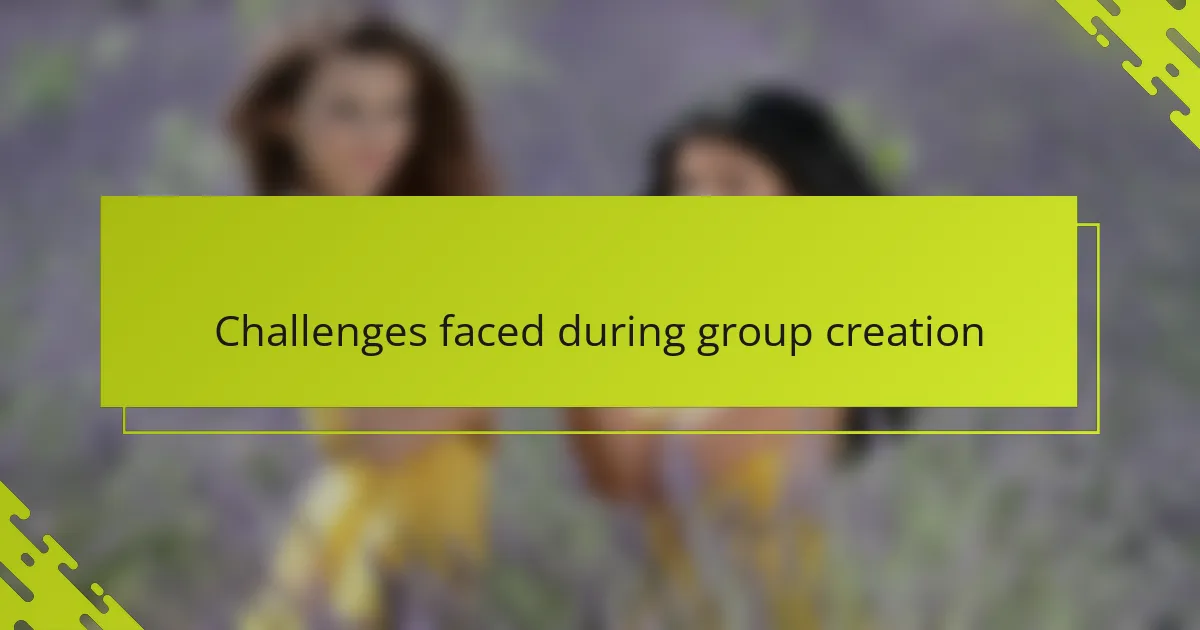
Challenges faced during group creation
Getting started, I didn’t anticipate how tricky it would be to find people willing to join. It’s one thing to want connection, but another when folks hesitate out of fear or uncertainty. Have you ever reached out and felt that pause on the other end? That moment made me realize building trust right from the start is its own challenge.
Another hurdle was balancing visibility with privacy. We wanted to welcome new members but also respect everyone’s safety in unpredictable environments. Choosing where and how to meet felt like walking a tightrope; too open could be unsafe, too hidden might keep people away. I kept asking myself, “How do I make this group accessible without exposing anyone to risk?”
Then, there was the emotional labor involved—holding space for raw, sometimes painful stories while managing my own feelings. It’s exhausting but vital work. I learned that setting boundaries and self-care aren’t just buzzwords; they’re survival tools when you’re creating a community that leans on vulnerability. Does anyone else find this balance hard to maintain? I certainly do.
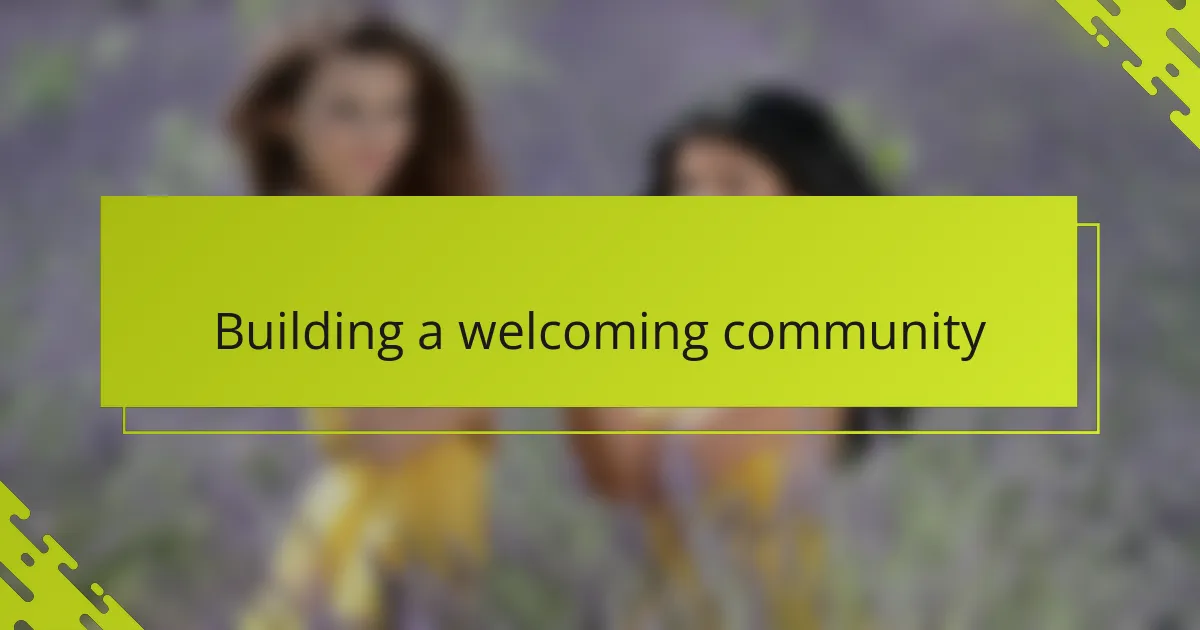
Building a welcoming community
Building a welcoming community starts with intentionality—it’s about crafting a space where every voice is valued and every story matters. I’ve found that simple gestures, like greeting new members warmly or remembering personal details, can quickly turn strangers into friends. Have you ever noticed how these small acts create an atmosphere of genuine belonging?
Creating openness requires constant kindness and patience. When I first facilitated meetings, I learned that setting clear, respectful guidelines wasn’t about control but about making sure everyone felt safe to share. Does establishing these boundaries feel restrictive, or do you see them as the foundation for trust too?
Finally, I’ve realized that welcoming isn’t a one-time effort; it’s an ongoing commitment. Each gathering is an opportunity to affirm identities and celebrate growth, even in moments of silence or struggle. How often do we remember that showing up consistently is one of the kindest ways to say, “You matter here”?
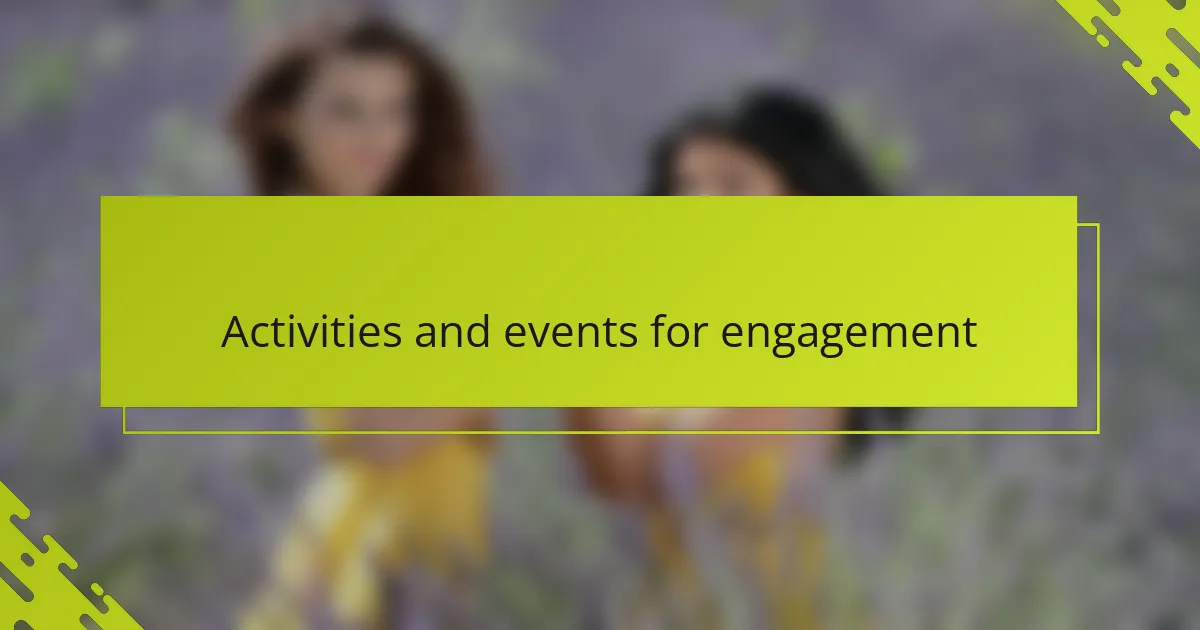
Activities and events for engagement
When planning activities for our support group, I quickly realized that variety is key to keeping everyone engaged. From casual coffee catch-ups to themed movie nights, mixing things up kept the energy alive and made it easier for members to find moments that truly resonated with them. Have you ever noticed how changing the rhythm of a group gathering can breathe new life into relationships?
One event that stands out for me was a creative workshop where we painted our personal journeys. Watching everyone translate emotions into colors and shapes was deeply moving—it opened new pathways for connection beyond words. I often wonder, how can we encourage more expressions of identity that go beyond talking?
I also found that organizing community walks or volunteer days fostered a strong sense of purpose and solidarity. Sharing time and effort outside the usual meeting space bonded us in unexpected ways. Have you experienced how working together builds trust that simply sitting and sharing stories might not achieve?
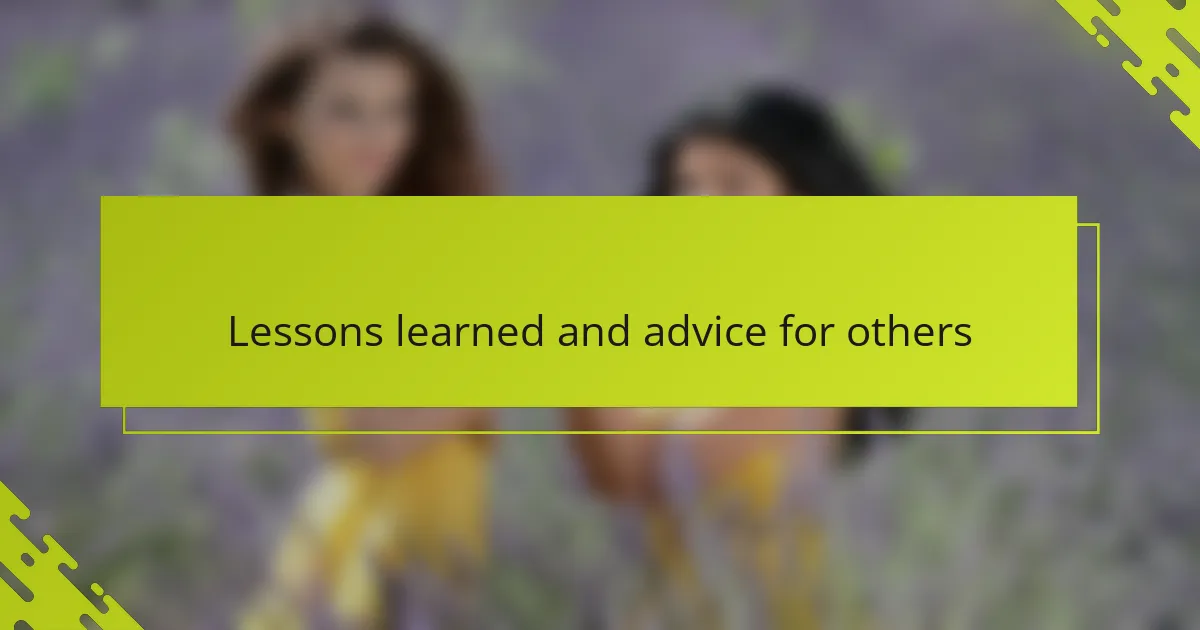
Lessons learned and advice for others
One key lesson I learned is the importance of patience. Building a support group isn’t about instant success; it takes time for people to feel safe and willing to open up. Have you ever waited for a seed to grow? That’s exactly how it felt nurturing trust within our group—slow but deeply rewarding.
Another piece of advice is to embrace vulnerability while setting clear boundaries. I used to think these ideas were at odds, but experience taught me they coexist beautifully. How do you protect your own well-being while holding space for others’ stories? For me, saying “no” when needed became a lifeline that kept the group sustainable.
Lastly, I found that celebrating small wins keeps momentum alive. Whether it was a newcomer sharing for the first time or everyone showing up on a tough day, acknowledging these moments created a positive cycle. Isn’t it amazing how little triumphs can fuel hope and connection in ways big milestones sometimes can’t?
